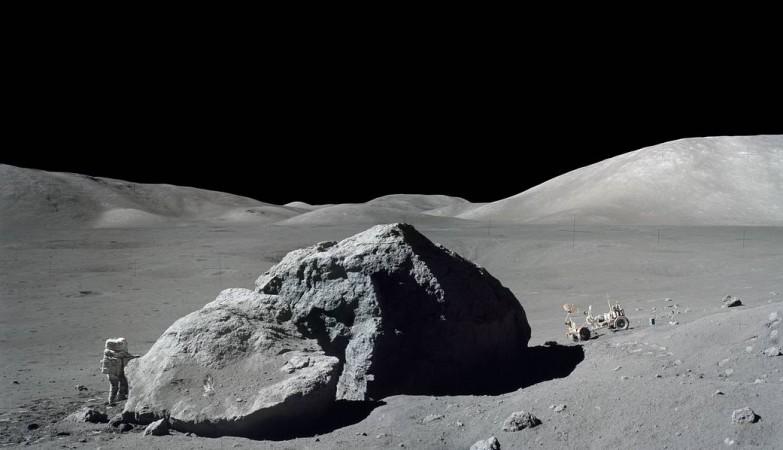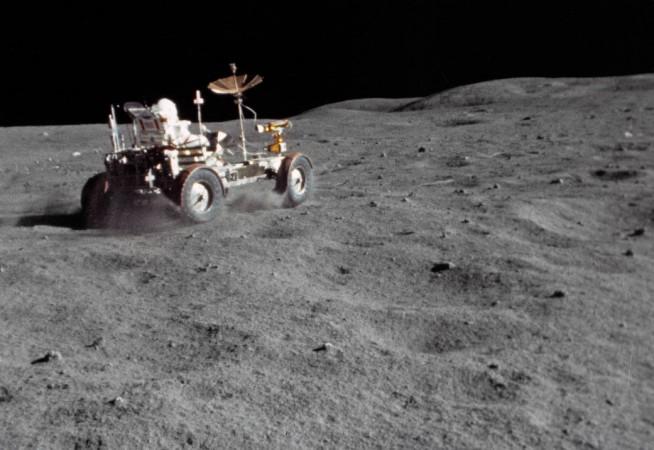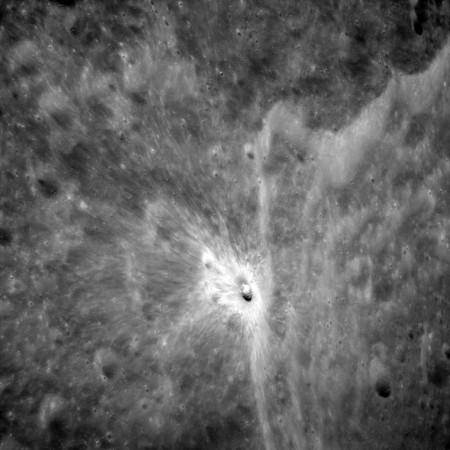
NASA is yet to study or conduct research on a major portion of Moon rock samples that were brought back to Earth by Apollo astronauts. The last people to walk on the Moon were Harrison Schmitt and Eugene Cernan- part of the Apollo 17 mission which concluded in December 1972.
Each mission, from Apollo 11 to Apollo 17 (except for Apollo 13, which had to circle the Moon and come back) brought back samples of rock and Moon dust. The final mission to the Moon by humans actually brought back about 110 kg or rocks and dust from the Moon. So where did all that rock and dust sample go? Surely NASA used it all for research?
According to recent reports, NASA is yet to go through or even study a majority of the Moon samples brought back by the astronauts. Through all the missions to the Moon, astronauts brought back about 2,200 individual samples of Moon rock, which adds up to about 382 kg, reports Futurism. Study on these samples are an ongoing process and over the course of over 45 years, scientists have barely put a scratch on the samples says NASA curator Ryan Zeigler who is responsible for all the rocks on Earth that come from extraterrestrial sources.

He went on to explain that only about 16 percent of the rocks have been used for research. The rest of the samples are kept in storage, in pristine conditions. Of the 16 percent, less than one third has been put up on display for people to see, the rest were used for research. One quarter of the samples studied have been destroyed through the research processes.
All remaining samples are kept safe, "Trying not to deplete the samples so that future scientists will still have the opportunity to work with them is definitely something we are considering," says Zeigler.
As to why these samples need to be preserved so well, he goes on to explain that while he considers the Apollo Moon samples primarily a scientific resource, while adding that as a scientist he is obviously biased, "it is undeniable that these samples also have significant historic and cultural importance as well, and thus need to be preserved on those grounds, too."
Another reason as to why the samples are still untouched, Zeigler explains that over the years since the samples were brought back to Earth, there has been significant advances in instrumentation and techniques that have allowed samples to be analysed better, at higher levels of precision, with "smaller spatial resolution".
So much so that over the last six years, there were about 351 requests for access to the Apollo samples. Within those applications, scientists have reportedly asked for about 692 individual samples every year, but the requested samples are really small, most of them for about 1 or 2 grams each. Additionally, 75 perent of the sample requests are loaned out, so they are likely to get them back.
About 84 percent of the Apollo samples remain untouched, reports NASA even though humans have not been to the Moon in over 4 decades.


















